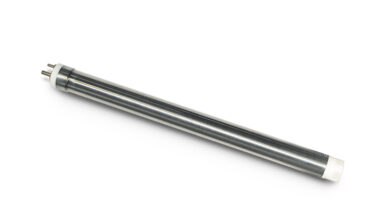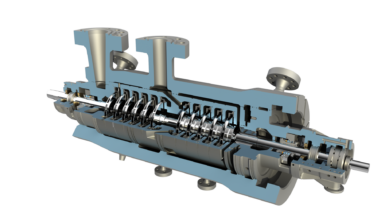The plug-and-play reliability of AODD pumps has helped them earn a “set it and forget it” reputation among their many devoted users.
That capability has also prompted some AODD pump users to term the machine a “run to failure” piece of machinery. This means that after it’s initially turned on since it requires very little attention or maintenance, it just runs and runs until it stops, at which point it is simply replaced with a new model, starting the whole life-cycle process over again.
Over the past six-plus decades, however, attitudes have evolved regarding pump monitoring. Specifically, the “run to failure” mindset that is common among AODD pump users has been called into question for a number of notable reasons: a better understanding of the true cost of equipment and system downtime; higher pump purchase costs combined with tightening capital investment budgets; the health and safety risks that malfunctioning pumps can pose to people and the environment; rising maintenance costs for labor and time; and regulatory standards that are becoming more strict in demanding that leaks of hazardous and dangerous products occur less often.
These factors have prompted the developers of many types of pump technologies to invent ways that their machines can be monitored without the need of an on-hand technician to visually gauge and record the pump’s performance levels. Driven by that consideration, significant breakthroughs have been made in digital Cloud-based remote-monitoring technology for a growing number of popular pump technologies, especially those that are more complicated to operate and have correspondingly higher purchase, maintenance, and repair costs, which makes it less cost-effective to simply replace them when a breakdown occurs.
Until 2020, the users of AODD pumps only had manual or analog solutions for their pump-monitoring needs – if they even chose to monitor their AODD pumps at all. That, however, changed when Wilden® developed a simple diagnostic and monitoring technology for its lines of AODD pumps. Called Wilden SafeGuard™, it allows the AODD pump to be remotely monitored 24/7 via continuous Cloud connectivity. Wilden SafeGuard is a true game-changer in optimizing AODD-pump performance, reliability, and cost of operation and maintenance.
Wilden SafeGuard is an all-inclusive pump-monitoring system that tracks, records, and alerts customers to key performance indicators of AODD pumps at all times of operation via cellular access. The Wilden SafeGuard system consists of a battery-powered stroke sensor and transmitter (called an Edge device) that is installed on the pump. The sensor collects and analyzes pump performance data in real-time and transmits it to a central gateway for encryption and transmission to the Cloud. Once stored on the Cloud, real-time and historic operational information can be accessed by the user anywhere in the world through a secure smartphone app or an online portal.
Anticipating potential failure conditions is not the only benefit of remote diagnostic technology. Since pump performance is likely to change over time, whether by normal wear or through outside system influence, monitoring indicators such as stroke rate or stroke count can be an invaluable tool for the operator. Any variance can be noted and recorded, letting the operator know if a failure may be imminent or if a proactive maintenance check may be needed.
The design and operation of the Wilden SafeGuard system allow for complete monitoring and real-time alerts related to a number of critical performance parameters for the pump (diaphragms, balls, seats). These readings can show the user such things as:
- Leak detection to indicate diaphragm leaks and failures, preventing product loss and safety hazards
- Stroke rates to monitor changes to highlight performance abnormalities
- Stroke count for batching and setting maintenance schedules
- Real-time alerts via SMS or email to indicate any noteworthy change in operation that may be a precursor to pump or component failure
While AODD pumps have proven to be one of the simplest, most reliable, cost-effective, and safest liquid-transfer technologies since their invention in 1955, the simple truth is that at some point every one of them will cease operating as efficiently as expected or simply break down. In the past, that meant nothing more than replacing the old pump with a new one, but advances in digital-monitoring technology have led to the creation of the Wilden SafeGuard. This revolutionary remote performance-monitoring system helps AODD pump users wring every ounce of service time out of them, efficiently and safely, before they need to be retired.































